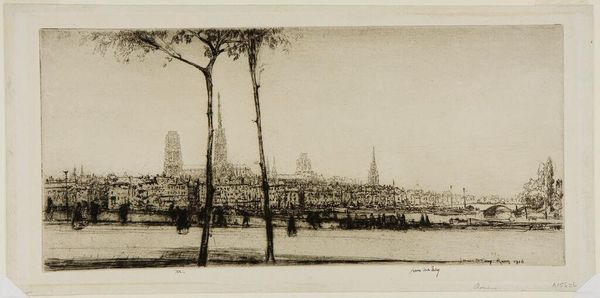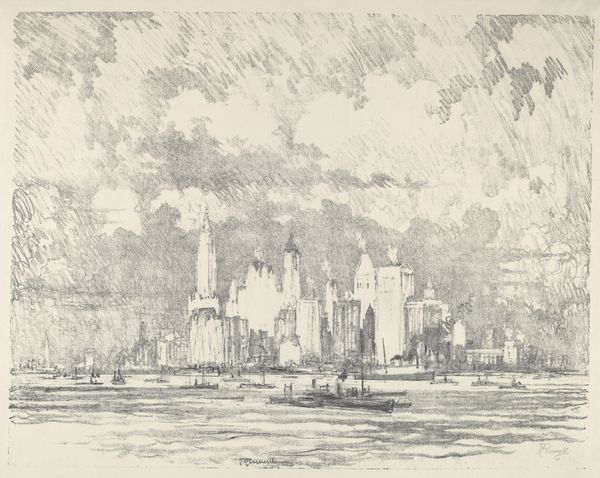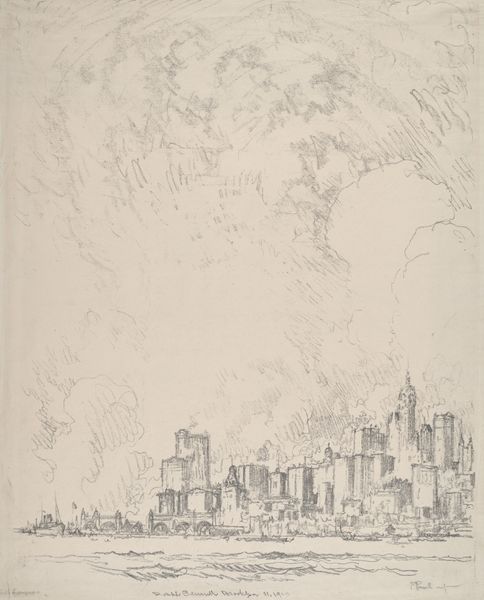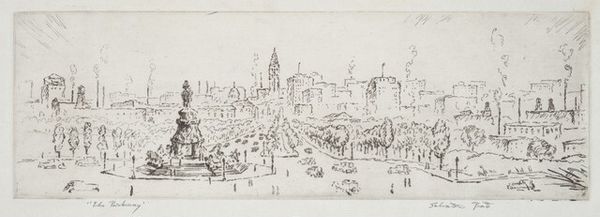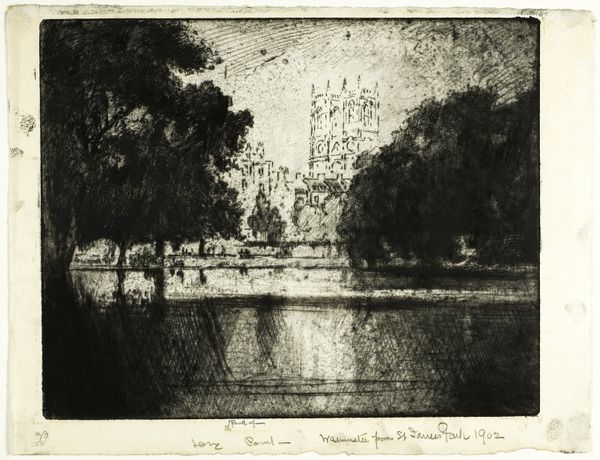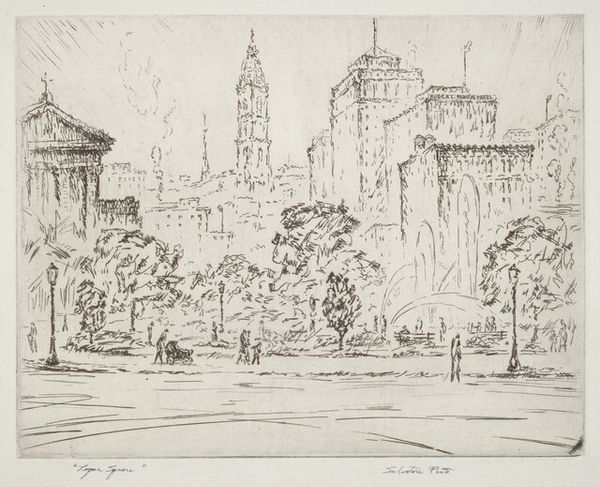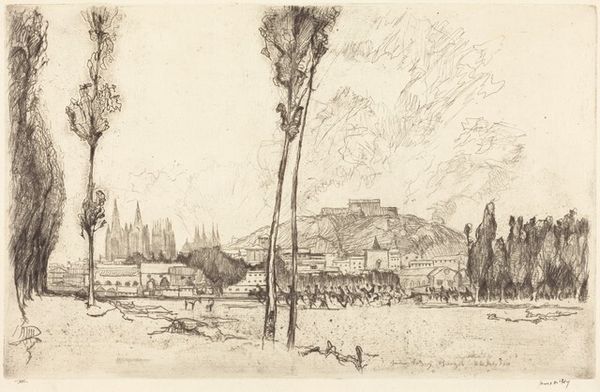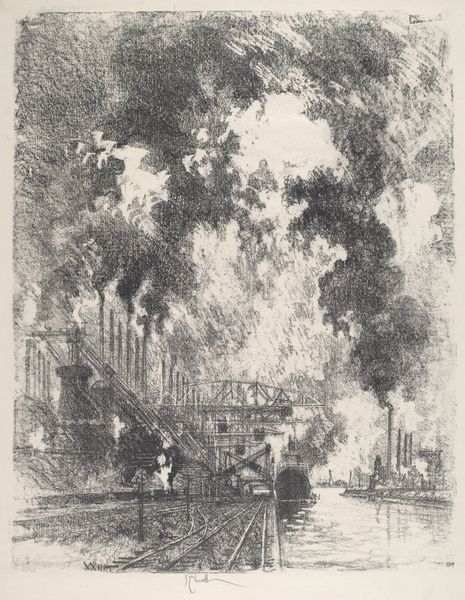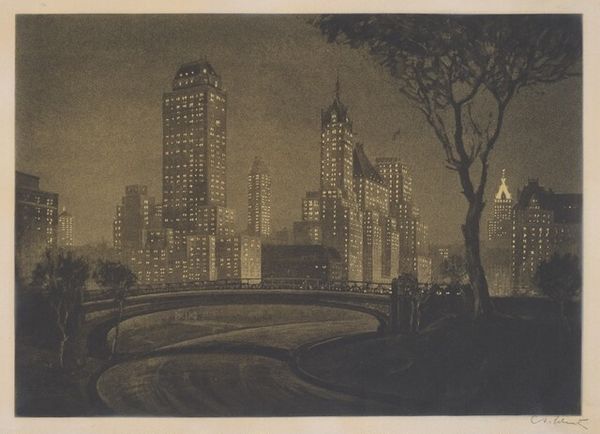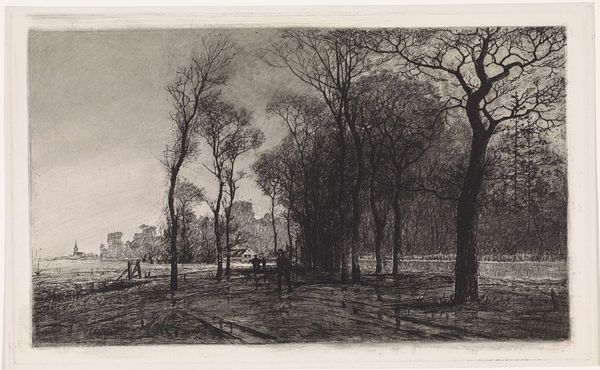
Dimensions: 7 7/16 x 11 15/16 in. (18.89 x 30.32 cm) (plate)8 11/16 x 13 1/8 in. (22.07 x 33.34 cm) (sheet)
Copyright: No Copyright - United States
Editor: This is Joseph Pennell’s "New York from Governor's Island," created in 1915. It's an etching, and the detail achieved with line work is quite impressive, especially given the medium. It gives the cityscape a hazy, almost dreamlike quality. What stands out to you? Curator: Well, consider the material conditions of its creation. This etching was produced during a period of intense industrialization and urbanization in New York. Look at how Pennell uses the etching process – a labor-intensive and reproducible method – to capture the burgeoning cityscape. Editor: So you see the method of reproduction itself as significant? Curator: Precisely. Etchings allowed for wider distribution and consumption of images, reflecting a shift in how art was produced and accessed. And think about the acid – a corrosive substance – used to create the image. What does this process suggest about Pennell's attitude toward the urban landscape? Does the process mirror the effects of industry itself on the city and society? Editor: That’s a different angle. I was mostly focused on the aesthetics and historical context of the subject matter, the cityscape itself. Curator: But the aesthetic choices are inherently tied to material possibilities and social realities. The starkness of the print emphasizes the contrast between nature and industry, while its reproducibility implies the widespread availability and consumption of these very images, shaping public perception of the modern city. We cannot remove it from those socioeconomic currents that are circulating about him. Editor: That gives me a lot to think about. Considering the materials and the process adds so much depth. Curator: Indeed, focusing on materiality enables us to move beyond the purely representational and engage with the social and economic forces at play in art production and reception. Editor: Thanks for the insightful explanation. I'll definitely consider the means of production when analyzing artwork in the future.
Comments
No comments
Be the first to comment and join the conversation on the ultimate creative platform.
